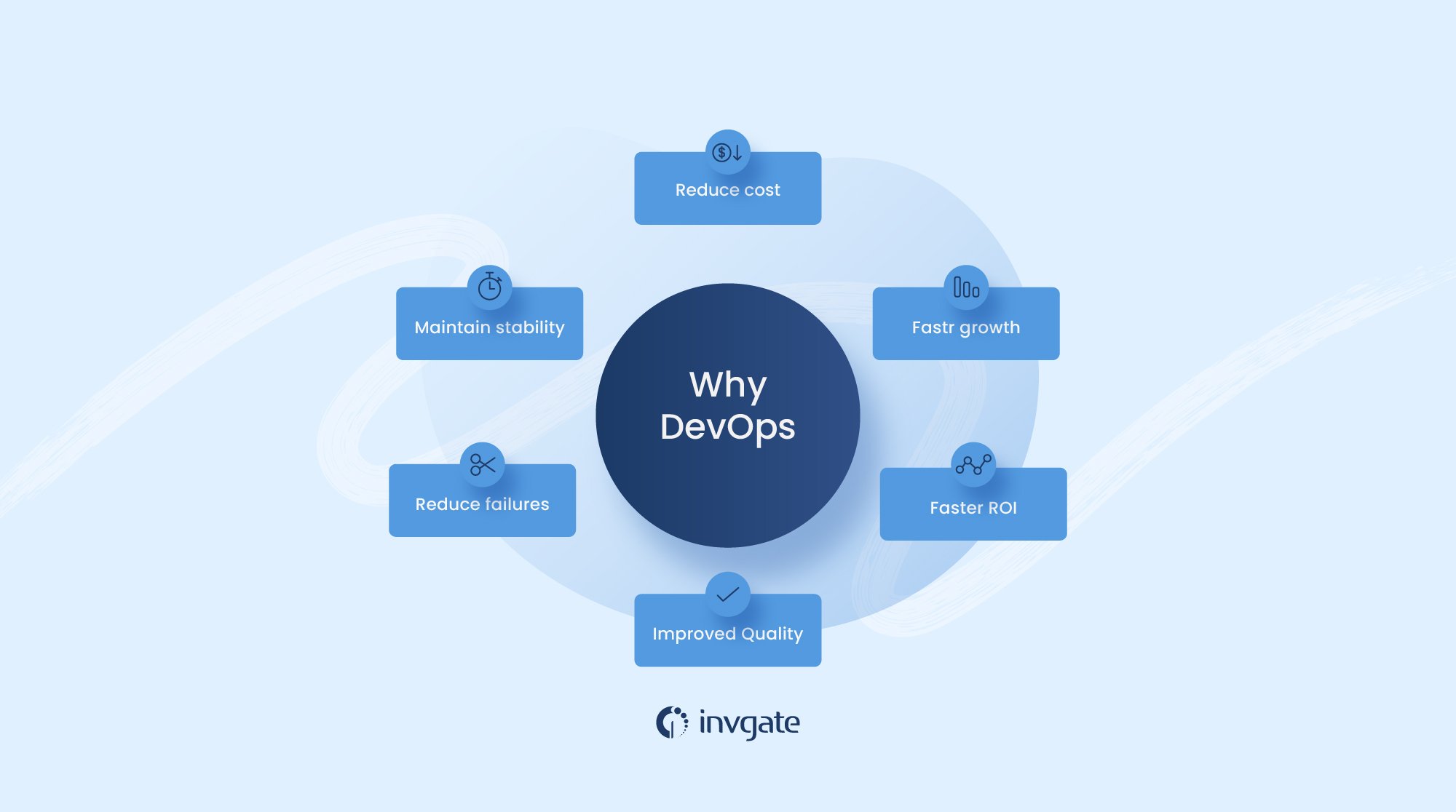What is DevOps?
The DevOps is the combination of two words, one is Development and other is Operations. It is a culture to promote the development and operation process collectively.

DevOps is a software development approach that emphasizes collaboration and communication between software developers and IT operations professionals. The goal of DevOps is to create a culture of collaboration between these two teams, with the aim of improving the speed and quality of software development and deployment. DevOps practices include the use of agile methodologies, automation, and continuous integration and delivery. This approach can help organizations to quickly and efficiently develop and deploy new software applications, which can improve their competitive advantage.
Why DevOps?

DevOps is important because it helps organizations to improve the speed and quality of their software development and deployment processes. By bringing together developers and IT operations professionals in a collaborative environment, DevOps helps to eliminate silos between these teams, which can improve communication and collaboration. This can help organizations to quickly and efficiently develop and deploy new software applications, which can improve their competitive advantage. Additionally, DevOps practices such as automation and continuous integration and delivery can help to reduce the risk of errors and improve the overall reliability of the software development process. Overall, DevOps can help organizations to become more agile and adaptable, which can be essential in today's fast-paced business environment.
How does DevOps work, anyway?

DevOps is a software development approach that emphasizes collaboration and communication between software developers and IT operations professionals. DevOps practices include the use of agile methodologies, automation, and continuous integration and delivery.
One of the key principles of DevOps is the use of automation, which can help to streamline the software development and deployment process. Automation tools can be used to automate many of the manual processes involved in software development, such as testing, building, and deploying code. This can help to reduce the amount of time it takes to develop and deploy new software, and can also help to reduce the risk of errors.
Another important aspect of DevOps is continuous integration and delivery, which involves regularly merging code changes into a central repository, and then automatically building and testing the software to ensure that it is ready for deployment. This can help to ensure that the software development process is always moving forward, and can help to prevent the build-up of large, complex code changes that can be difficult to manage.
Overall, DevOps is a comprehensive approach to software development that aims to improve the collaboration, communication, and efficiency of the software development process. By using agile methodologies, automation, and continuous integration and delivery, DevOps can help organizations to quickly and efficiently develop and deploy new software applications, which can improve their competitive advantage.
The DevOps lifecycle
The DevOps lifecycle typically involves the following steps:
Plan: In this phase, the team defines the goals and objectives of the project, and creates a plan for how to achieve them. This may involve identifying the specific features and functions that need to be developed, as well as any constraints or dependencies that need to be taken into account.
Code: In this phase, the development team writes the code for the software application. This may involve writing new code, as well as modifying and refactoring existing code. DevOps practices such as agile methodologies and continuous integration can help to ensure that the code is developed efficiently and effectively.
Build: In this phase, the code is compiled and built into a deployable package, such as an executable file or a container image. Automation tools can be used to automate this process, which can help to ensure that the build is consistent and repeatable.
Test: In this phase, the software is tested to ensure that it functions as expected and meets the requirements defined in the planning phase. This may involve running automated tests, as well as manual testing by quality assurance (QA) engineers.
Deploy: In this phase, the software is deployed into a production environment, where it is available for use by end users. This may involve using automation tools to deploy the software, as well as configuring the production environment to support the software.
Operate: In this phase, the software is monitored and maintained in the production environment. This may involve responding to any issues or problems that arise, as well as performing regular maintenance and updates to the software.
Monitor: In this phase, the performance of the software is monitored to ensure that it is functioning as expected. This may involve collecting and analyzing logs and other data to identify any potential problems or areas for improvement.
Overall, the DevOps lifecycle involves a continuous process of planning, developing, testing, deploying, and operating software applications. By using agile methodologies, automation, and continuous integration and delivery, DevOps can help organizations to quickly and efficiently develop and deploy new software applications, which can improve their competitive advantage.
